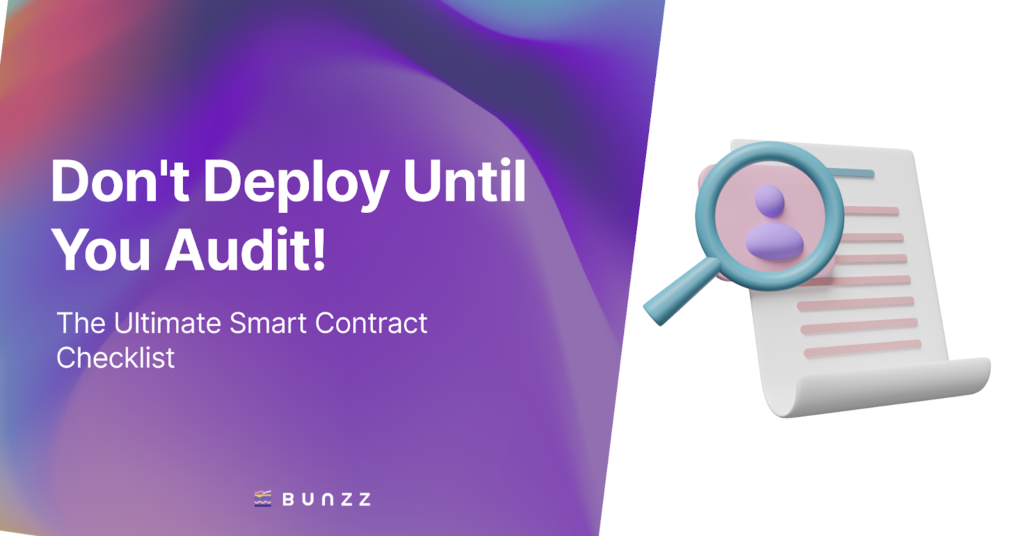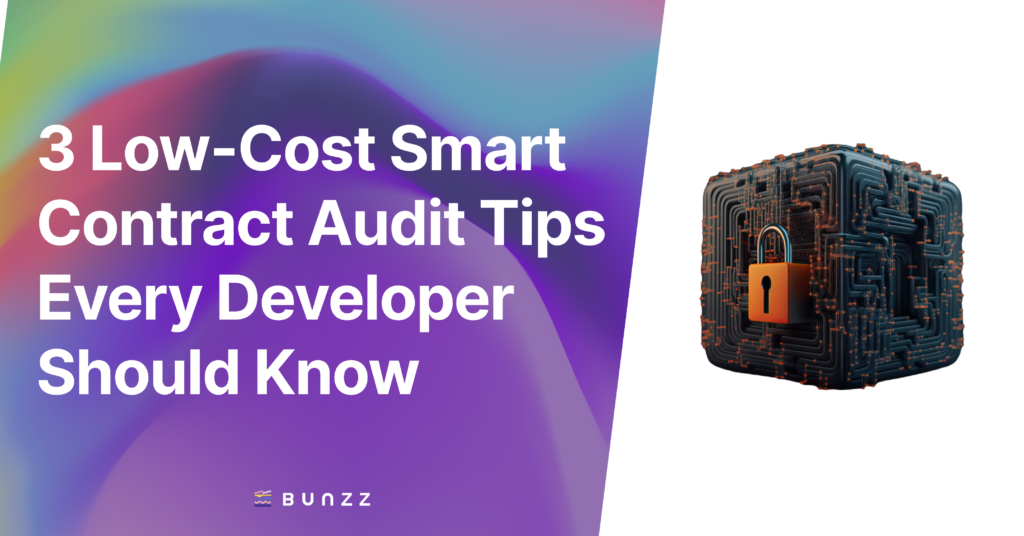Disclaimer: This is not security advice. Always do your own research before making any security decisions.
Building a smart contract is like constructing a complex machine: exciting, and innovative, but risky. Just like you wouldn’t launch a rocket without rigorous checks, your smart contract needs a thorough audit before interacting with real money or assets.
Think of an audit as a security team inspecting your code for bugs, vulnerabilities, and loopholes that bad actors could exploit. It’s not just about ticking boxes; it’s about catching hidden flaws that could cost you and your users dearly.
Here’s your ultimate smart contract audit checklist, explained in simple terms:
Before the Audit:
- Clean your code: Review your code line by line, fix any known errors, and ensure it’s well-documented and easy to understand. You can use tools like Slither, Mythril, or Bunzz Audit (Launching soon) to automatically scan your code for vulnerabilities. Also, don’t forget to write clear comments and explanations within your code for better understanding.
- Define your scope: What functionalities does your contract have? What are its potential attack vectors (areas prone to exploitation)? Clearly outlining your goals and concerns helps with the auditing process.
Another way to define your scope is to highlight areas in the code handling funds, access control, and critical operations. One last tip is to think like a hacker and consider ways someone might exploit your contract.
During the Audit:
- Fix the vulnerabilities: Take the identified issues seriously and fix them promptly. You can use tools like STRIDE or PASTA to systematically identify potential threats. Don’t ignore warnings; even seemingly minor flaws can be disastrous.
- Test and re-audit if needed: Write individual tests for each function to ensure they behave as expected and how different parts of your contract interact with each other. Tools like sFuzz can help you to randomly generate inputs and stress-test your contract.
After the Audit:
- Stay vigilant and re-audit: Security is an ongoing process, not a one-time fix. Depending on the level of threat you find, a re-audit might be necessary to ensure everything is patched up tight. Keep your contract updated, monitor its activity, and be prepared to respond to new threats.
- Continue monitoring: Security is an ongoing process. Actively monitor your deployed contract for suspicious activity and stay updated on emerging threats and vulnerabilities.
Deploying an unaudited smart contract is gambling with your users’ trust and your reputation. Don’t take the risk! Follow this checklist and take security seriously. DYOR (Do Your Own Research) and don’t forget:
- No Tool is Perfect: Each tool has limitations and potential false positives. Combine results from multiple tools and manual review for a comprehensive assessment.
- Testing is not Exhaustive: You can’t test every possible scenario. Focus on high-risk areas and continuously improve your testing strategies.
- Involve the Community: Consider sharing your code with trusted colleagues or security experts for fresh perspectives and vulnerability discovery.
If you are proactive and take the necessary steps, you can ensure your smart contract is a success story, not a cautionary tale.
Conclusion
Internal smart contract audits are a complex task, demanding expertise, meticulous planning, and ongoing vigilance. While this guide provides a framework, remember that security is a journey, not a destination. Continuously learn, adapt, and seek external expertise when needed.
Remember, the security of your smart contract relies on how well your internal audit process is. So, tread carefully, prepare well, and audit with confidence.







